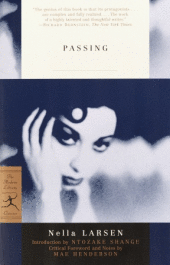Anatole Broyard (1920-1990), an American writer, was the first black literary critic for the New York Times – but the thing was, they did not know he was black! He passed for white. His daughter, Bliss Broyard, wrote about it in “One Drop” (2007).
Broyard was born in New Orleans into a Creole family that was a liberal mix of both black and white. Going by his daughter’s DNA test, Broyard was about 34% black and 56% white – a common mix for Puerto Ricans. Growing up in New York he got into fights because he was too black for the whites and too white for the blacks. In his high school picture in 1937 he looks black.
But then a year later on March 2nd 1938 he went to the Social Security office to apply for a government tax number so he could work. Right there on the form, which we still have, you can see him make his decision: he marks Negro but then scratches that out and then marks white!
Before he went off to fight in the Second World War he married a black Puerto Rican woman and had a daughter by her, Gala. But when he came back from the war he divorced her. He then proceeds to make a name for himself as a white writer, marries a white woman and moves to a white neighbourhood in a very white town and brings up his son and daughter as white. They had no idea he was part black till he was on his deathbed (though his wife and some friends knew).
The New York Times would not have hired him as a literary critic if they knew he was black: blacks, after all, can only write about “black” subjects! It is the same reasoning that Hollywood uses too: black actors can only play “black” characters. Blacks are not seen as “universal”, but whites are.
Broyard thought that he did not need to be black or white, that he could just be himself. But to succeed as a literary critic he had to present himself to society as a white man, which meant turning his back on his mother and two sisters, who lived as black (one sister could pass but not the other).
One time his mother wrote him a letter begging to see her grandchildren before she passed away. He let her see them – once. They did not understand who she was.
That makes him sound ice cold, but his daughter says he was a loving family man. She says the way he had to keep the two sides of his family separate tore him apart inside.
When his daughter found out she was part black she thought it was cool, but did not like how her father had kept it a secret from her for 25 years. She supposes that he wanted to spare her the pain he went through growing up.
See also:



